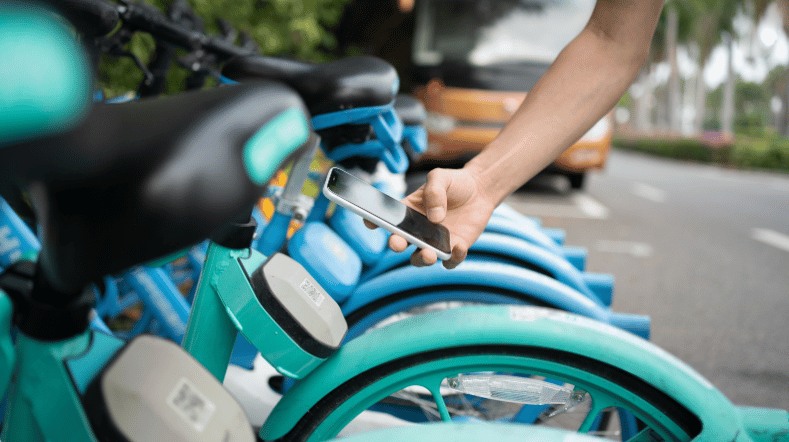
The mobility transition
New technologies change the way we work, travel and transport goods. However, without guidance, mobility transition can have undesirable consequences. These could include a negative environmental impact, reduced safety and liveability, compromised inclusivity and congestion. That’s why we offer advice to all parties involved in the challenges of the mobility transition.
Challenges of the mobility transition
The combination of digitisation and automation has major consequences for the mobility system as we know it today: a mobility transition is taking place, such as the rapid rise of electric scooters and shared scooters, and new technologies such as autonomous driving. Government policy must guide the mobility transition in the right direction. Without government guidance, a sustainable society and ‘mobility for all’ could be at risk. We research the challenges, opportunities and risks of the mobility transition. These studies provide important insights into possible transition paths and their impact.
The ball is in the government's court
To prevent socially undesirable developments, action is needed now. From all stakeholders, but especially from government. This starts with more closely defining a holistic vision of our future mobility, logistics and spatial development. It also requires cooperation, within the Netherlands and Europe. Governments have to make choices regarding accessibility, liveability, sustainability, safety and affordability of mobility. It is also important to continuously aim towards long-term social goals, and to provide adaptive policy management. As well as providing space and frameworks for market parties to create new mobility services.
Combining forces
It’s up to governments to implement an adaptive programme for dealing with the mobility transition. It’s important that governments, businesses and users look beyond their own interests and combine their innovative powers to keep the living environment liveable, accessible and safe. Companies must be challenged to think of smart ideas, to look beyond the Dutch borders and to collaborate. This will allow new business models to emerge that can prevent monopolies. In addition, logistics services can be developed into exportable products.
The innovation power of companies
Leveraging the innovation power of companies and the application of new technologies provides enormous opportunities for the mobility transition. This is why we encourage collaboration between mobility providers, ranging from rail, tram, metro to bus and the new generation of mobility/service providers. Opportunities exist in, for example, making public transport more flexible and more automated.
Ideally, a fair, efficient and future-proof mobility market will emerge. A market which will see new players, where a level playing field exists, and where companies develop socially responsible business models. But these markets don’t come into existence by themselves. They require preconditions which offer space for new business models and for new mobility services that contribute to accessibility, liveability, sustainability, safety and affordability.
Considering the users
Users are also an important party to consider in the mobility transition. Think about what services and solutions appeal to them, as well as the ethical, privacy and safety-related issues and challenges. Our advice is to steer towards ‘mobility for all’: accessible, affordable and fair. And to regulate user protection in terms of privacy, social equality, cost, safety, working conditions and sustainability.
This also requires an organisation within the ecosystem that properly represents users and their interests. The challenge is to create a situation in which governments, businesses and users work together to achieve an optimal balance between their interests and implementation of these innovations.
Mobility transition in freight transport
Today, freight transport policy often focuses on the shift from road to rail and inland waterways. TNO however, is exploring a transition for combining self-driving cars, electric driving, use of platforms and night driving. These developments are happening faster in road transport which, in turn, may lead to a reverse shift, from rail and inland waterways to road. Depending on how the transition develops, this may lead to both a desirable and undesirable situation.
TNO supports the mobility transition
We are ready to help shape the future mobility system and living environment in the best possible way. We do this by using innovative tools, knowledge products and resources and technical innovations. In doing so, we include the users' preferred behaviour in our models. This allows us to support governments and businesses in optimising societal impact and minimise risks.
We do this by applying our comprehensive, innovative and cross-domain knowledge. We have insight into the impact of current changes and knowledge of technological details and social transitions regarding mobility, logistics, urbanisation, economy and governance. This helps us to contribute to moving the entire mobility system in the direction of the desired transition path.
Download our whitepaper:
‘Successful mobility transition with adaptive travel guidance'
Get inspired
How governments can make MaaS work to societal goals




